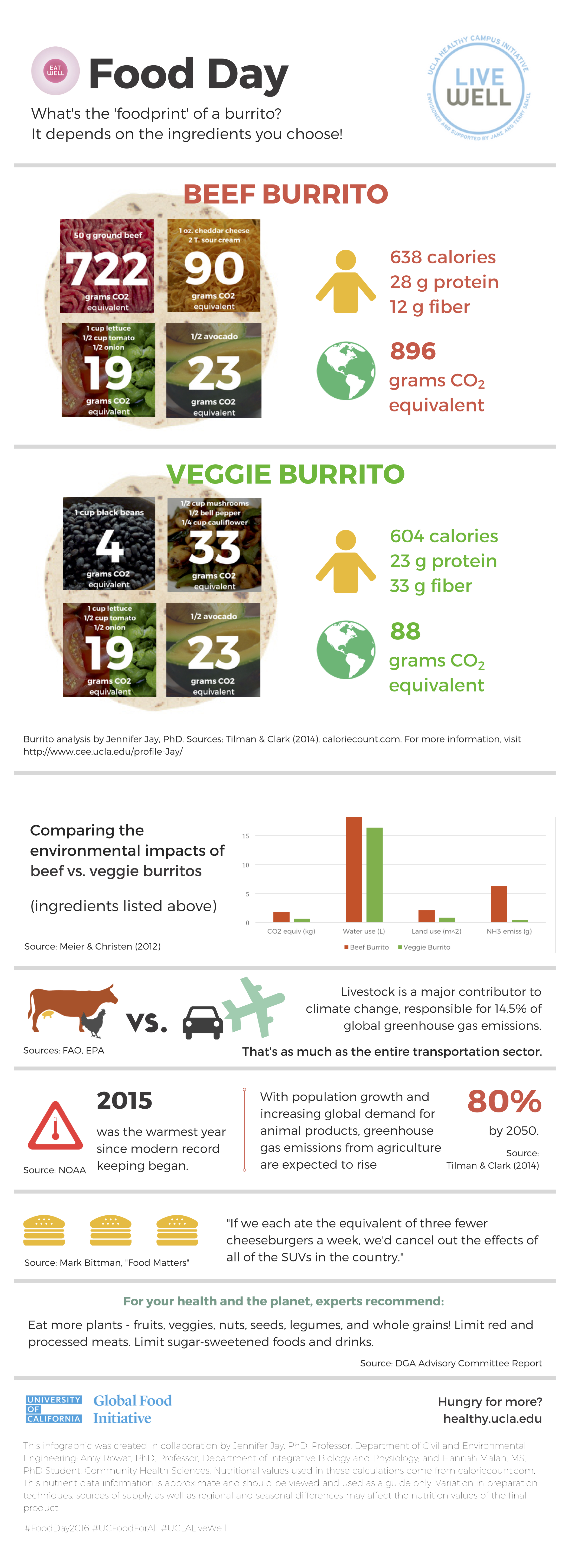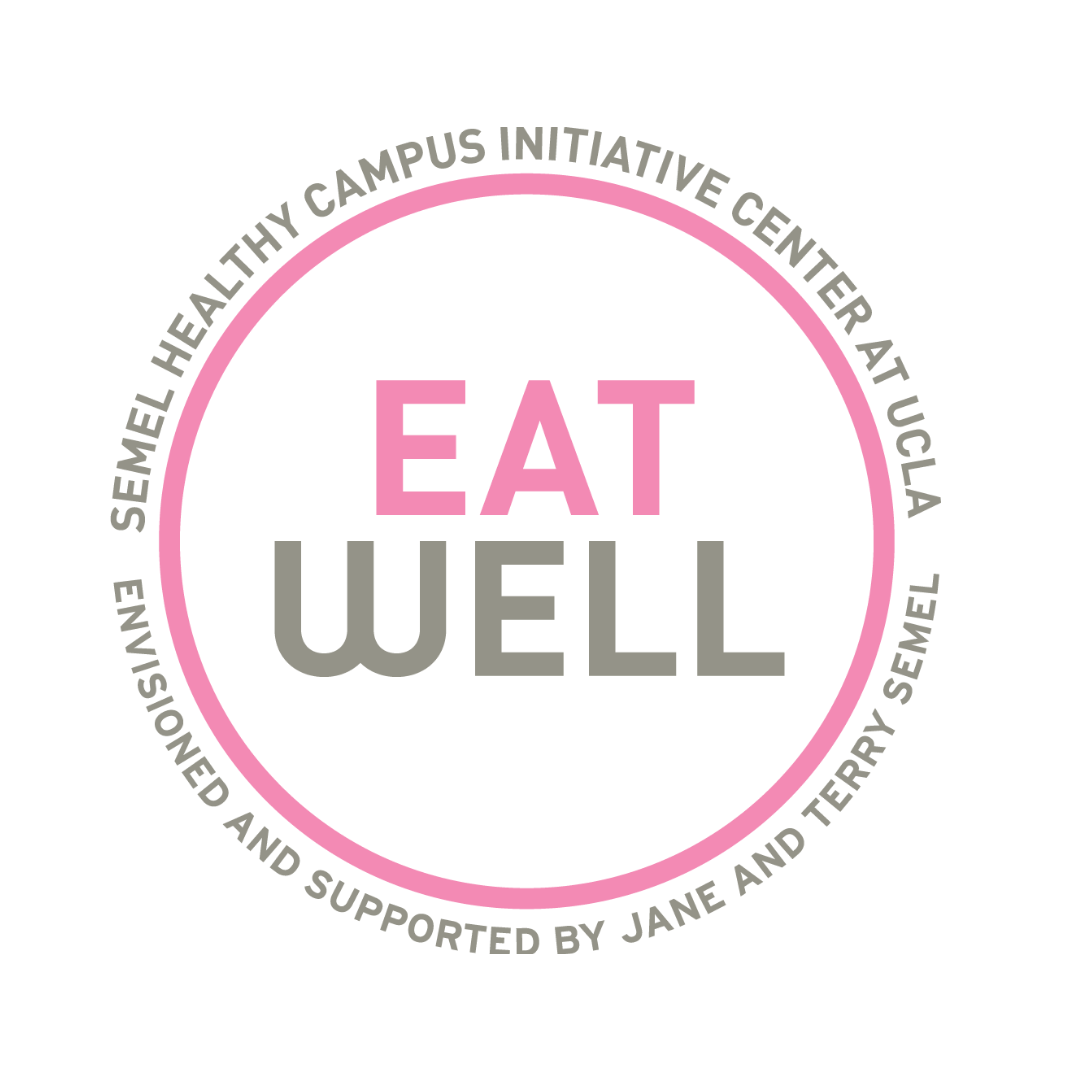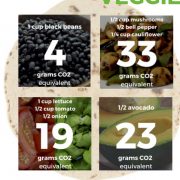Battle of the Burritos: Understanding the Footprint of What We Eat
By Hannah Malan, Graduate Student Researcher, UCLA Healthy Campus Initiative EatWell Pod
As part of our Food Day celebration this year, the UCLA Healthy Campus Initiative EatWell pod collaborated with Jennifer Jay, Professor of Environmental and Civil Engineering, to create an infographic that compares the nutrient data and environmental impact of two different recipes for one much beloved food item: the burrito.
We created two burritos – one bean and veggie, one beef and cheese – and compared their overall nutrition profile as well as the carbon footprint of the ingredients inside. The results were impressive. While similar in calories and protein, the beef burrito had 10x the footprint of the veggie burrito.
We asked UCLA Health System Senior Dietitian, and Fielding School of Public Health Adjunct Assistant Professor Dana Hunnes to comment on our results.
From a dietitian’s perspective, can you help us better understand the difference between eating a veggie versus meat burrito?
Swapping out plant-proteins and vegetables in general is always great for your health and the environment (as we can see from this infographic).
From the perspective of our health, there are so many vitamins and minerals that are present in plant-based foods, along with antioxidants, phytochemicals, fiber, and just a whole host of nutrients that can only be found in plant foods.
We do not need nearly as much protein as “we’ve been ‘taught’ to believe” that we do. In fact, according to Dietary Reference Intakes (DRIs), we really only need roughly 0.8g/kg of protein per day, even for active adults!
What does this mean?
It means that a 135-pound female (~61kg) only needs about 49 grams of protein each day. A 180-pound male (~81kg) only needs about 65 grams of protein each day.
These are really quite easy to obtain! After all, almost everything has protein in it! Not only that…but, this study shows that body builders, really only need around 1.3-1.5grams/kg of protein…so, even if you’re a body building athlete, you still only need ~105grams of protein per day, not the stereotypical 3x as much protein.
The bean burrito has 23 grams of protein! That’s nearly 2/3 of what a healthy female needs over the course of the day, and roughly ½ what a healthy male needs. The beef burrito has slightly more protein (28 grams), but a much larger (10x) carbon footprint. It’s also important to note that we can only absorb up to 30 grams of protein at any one time, so both burritos are approaching that limit.
You also wrote your PhD dissertation about climate change and sustainable dietary patterns. Can you comment on the environmental impacts of the two burritos?
Aside from all the healthy nutrients that are more likely to prevent and/or mitigate chronic diseases (diabetes, cardiovascular disease, obesity, kidney disease), plant-based proteins (think: beans, legumes, quinoa) and a plant-based diet is extremely good for the environment.
As you can see from the side-by-side comparison of carbon equivalents from the two diets, the plant-based burrito is much better. Roughly 10% the amount of CO2 equivalents as the beef burrito.
In addition to driving less and using less electricity, the FASTEST, EASIEST, AND BEST way to reduce our carbon footprint is to eat a plant-based diet. We do NOT need meat in our diet, and in fact, there is evidence to suggest that meat-heavy diets increase the risk of and exacerbate already-present chronic diseases, and are pro-inflammatory.
So, from a personal-health perspective, and an Earthly-health perspective, the best thing we can do is eat a plant-based diet.
What are Americans actually eating?
According to the FAO’s 2012: World Agriculture Towards 2030/2050 report, average per capita intake of meat for the United States is roughly 200 pounds per person per year, and will increase to 212 pounds per person per year in the next decade.
In developing countries, current intake is roughly 62 pounds per person per year, and is expected to increase to roughly 93 pounds per person per year over the same time frame. This represents a huge problem since the developing world’s population is going to increase far faster than the developed world’s.
We in the United States and other developed countries need to demonstrate our commitment to reducing our meat consumption if we expect the rest of the world to follow suit.
But aren’t high protein diets good for weight management and keeping us full?
Consuming a whole-foods plant-based diet – meaning non-packaged, fruits, vegetables, whole grains, legumes, nuts, seeds, avocados, healthy vegetable fats (olive oil) – increases satiety because it has such high volume and water content.
Of course, consuming packaged plant-based foods (i.e. Doritos) will lead to weight gain and low satiety because there is minimal volume, for a lot of calories. But, consuming multiple foods from those listed above will increase satiety, and can certainly help with weight management and weight loss.
It’s about diet quality! Protein does enhance satiety, but overdoing protein can just lead to more fat-storage. Any time you omit a food-group you are likely to lose weight, which is what Atkins/high-protein diets essentially do. I am advocating that we omit the animal-proteins group…similar concept; but switches the ‘food pyramid.’
Learn more about our Food Day campaign, check out our favorite food films, and see what UCLA Dining is doing to reduce our campus ‘foodprint.’
Read more from Dana on her Huffington Post blog.
Join the conversation #FoodDay2016 #UCFoodForAll #UCLALiveWell


